► Seat’s small, refreshed crossover driven
► 2024 introduces new FR Limited Edition trim
► Simple, sensible and low-aggro motoring
The 2020s are weird, aren’t they? Cars are being jam packed with technology, complicated engineering, screens and software and AI and… it’s all a bit much sometimes.
Are there any cars left that just get on with the job without issue, fuss or over-complication? Yes, as it turns out, there is. Step this way…
At a glance
Pros: Sweet to drive, sensible and neat cabin, tech isn’t overbearing, good boot
Cons: Slow auto, ride is jittery on big wheels, tyre noise
What’s new?
Well, the Seat Arona has been around since 2017 and has quietly become a big seller Seat’s range. It runs on the same MQB A0 platform as the brand’s Ibiza, as well as the VW Polo, T-Cross and Taigo, and the Skoda Fabia and Kamiq.
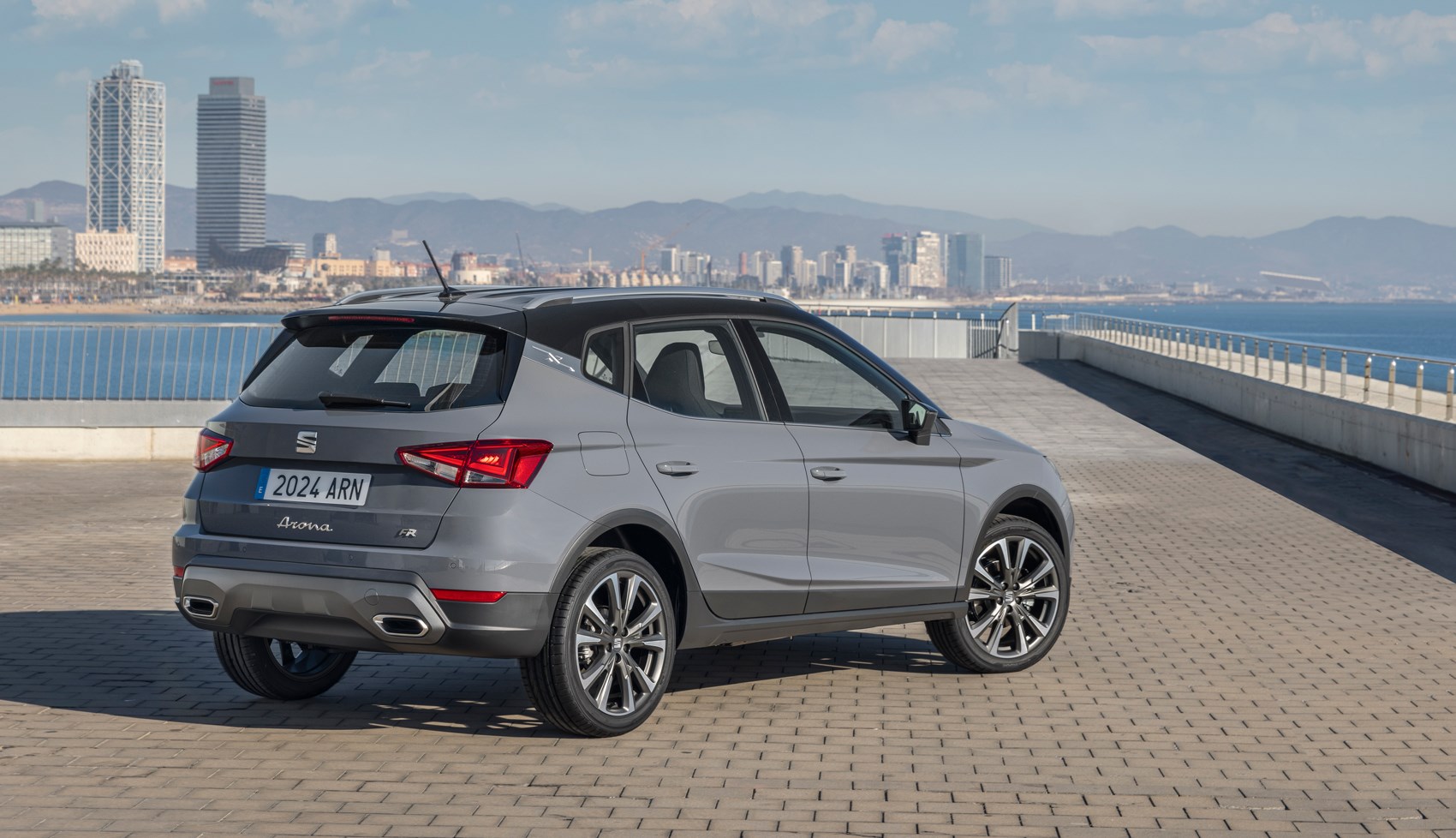
The Arona was given a facelift in 2021 with a tweaked design and fresh tech and, after that… not much has happened as Seat S.A. has focused more on getting Cupra off the ground. Seat politely reminded us about it when a new FR Limited Edition arrived in 2024 (pictured in a gloss grey), which has given us an excuse to drive it again.
What are the specs?
There’s quite a range of models, and it can get a bit confusing.
Let’s start with the engines, which are all petrol. Your choices are either a manual-only 94bhp 1.0-litre three-cylinder, a 113bhp 1.0-litre three-cylinder available with either a manual or a DSG auto or a 148bhp 1.5-litre four-cylinder only available with a DSG auto.
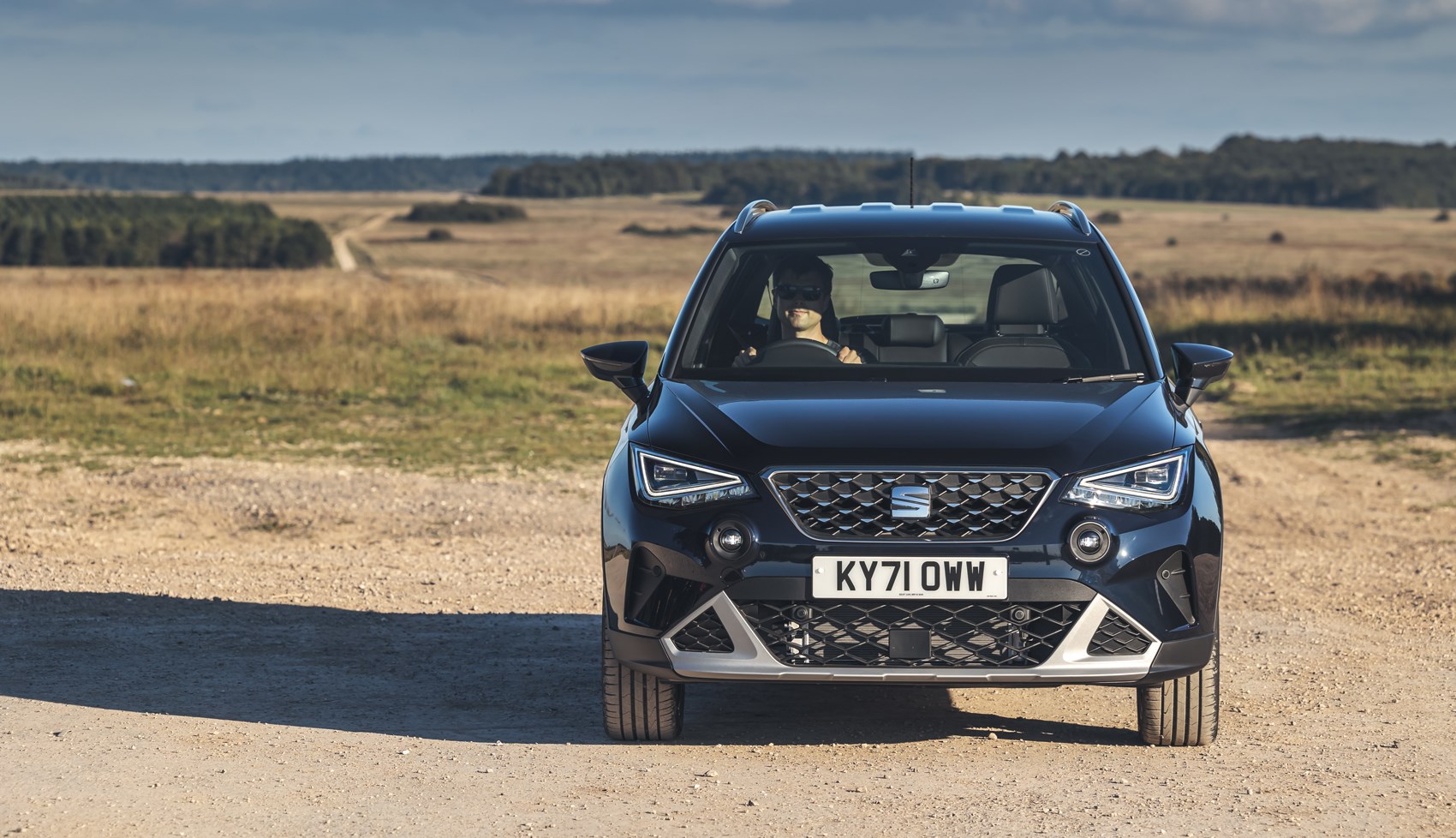
There’s only about a second difference in the 0-62mph acceleration time between the 94bhp and 113bhp engines (11.3 vs 10sec) and regardless of engine, you’re looking at around a 50mpg-ish fuel economy potential.
Then you get to the bewildering range of trims, which is probably the only excessive thing about the Arona. Here’s a quick explainer:
• SE: 17-inch wheels, eight-inch infotainment & digital instruments, wireless Apple CarPlay & Android Auto, cruise control, parking sensors and rear camera
• SE Technology: Bigger infotainment screen with nav over SE
• FR: Sportier look inside and out than the SE models
• FR Sport: 18-inch wheels, 10-inch digital instruments
• FR Limited Edition: bespoke colours, keyless entry/start, Beats audio upgrade
• Xperience: adaptive cruise, keyless entry/start, auto high beam and wipers, dual-zone climate control
• Xperience Lux: 18-inch wheels, 10-inch digital instruments, auto park assist and heated front seats over Xperience
Got all that? Prices start from £22,460 for the most basic SE, rising north of £28,260 when choosing Xperience Lux. The recently-added FR Limited Edition starts from £27,490.
What about the interior?

Almost everything is right-sized and well placed. There are welcome physical controls for the air conditioning, and banks of buttons for handy functions that flank the transmission shifter. Big door bins, useful cupholders, a tray for your phone and a right-sized screen with a reasonably responsive operating system all feature. Overall quality is good, with plenty of robust materials used, while the FR Limited Edition we tested featured upholstery made from recycled materials.
Our only real grumble is the set of buttons on the steering wheel; there are so many, and some of them don’t really seem to make sense in terms of their location. Why is the volume roller with the cruise control buttons? Why are there multiple single-use buttons that do largely the same job to set the cruise control?
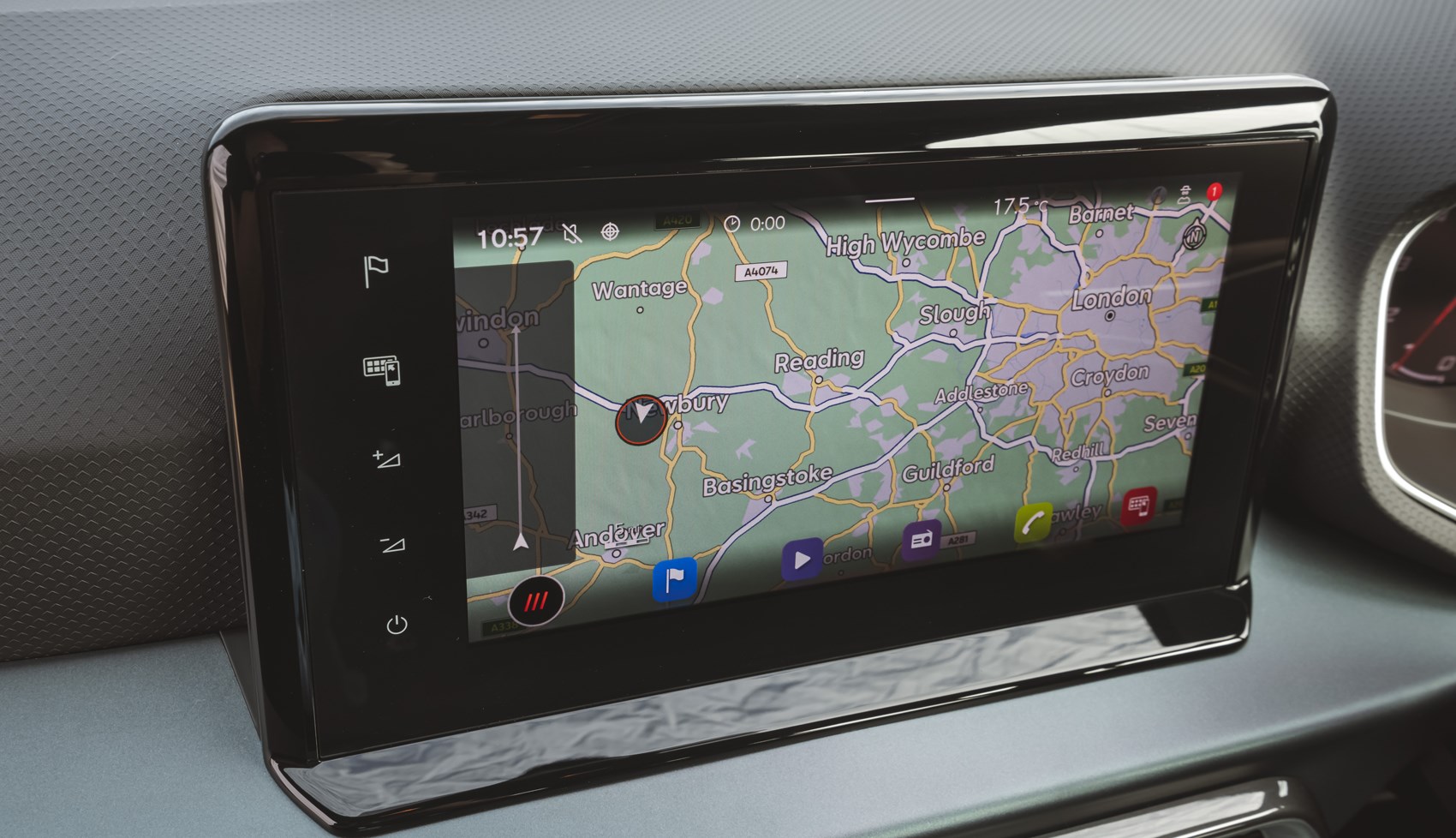
But, other than that, the Arona is a perfectly good place to spend time. There’s good seat adjustment, your view out isn’t particularly hindered in any way and the seats are supportive. In the second row, it’s cosy for adults but not impractical and the boot is a good size for the class at 400 litres.
How does it drive?
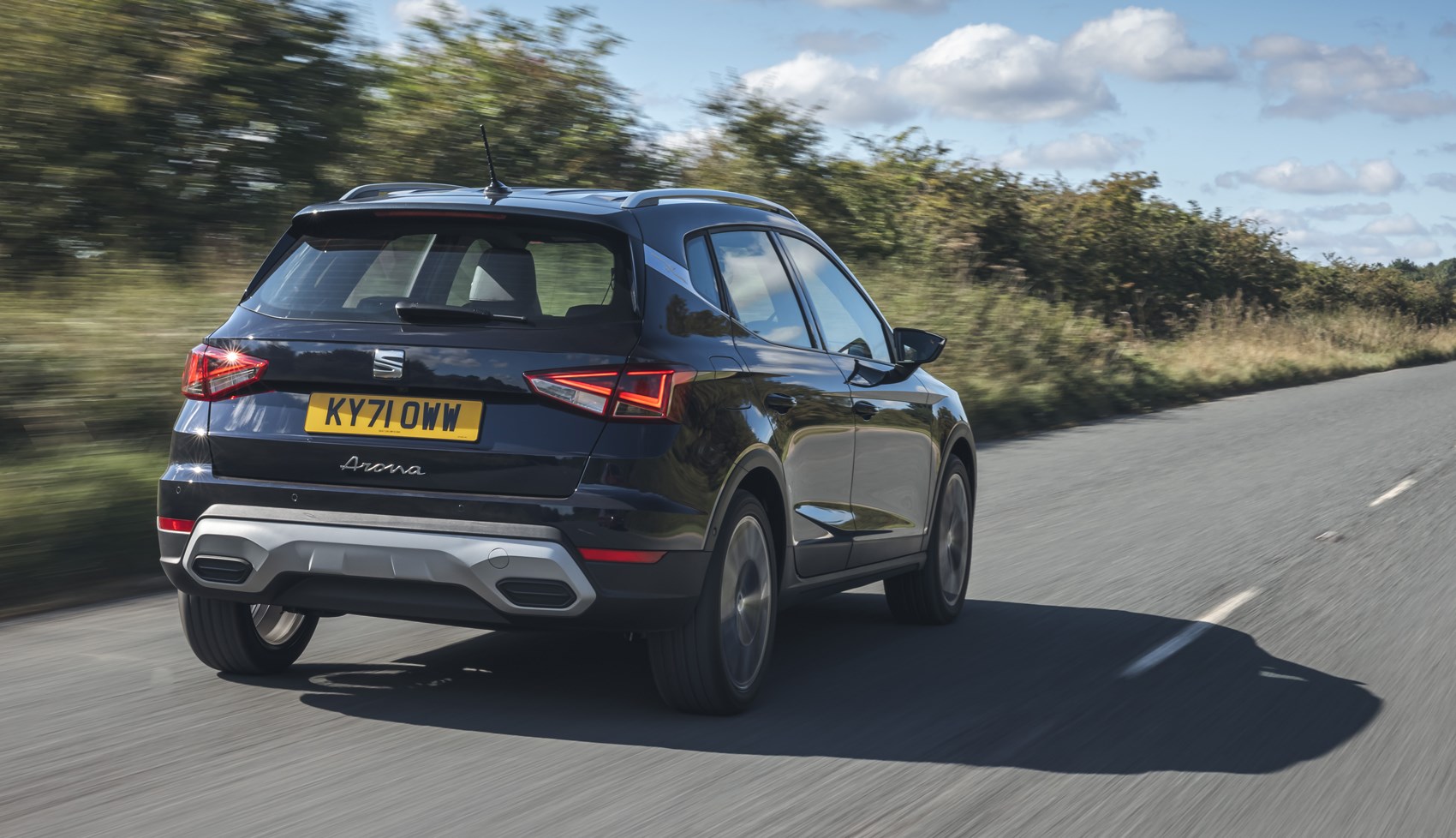
The buzzy three-cylinder we’ve tested is more than enough, getting on with the job smoothly with a characterful hum in the background. It’s quiet and reasonably torquey, making it fine enough for nipping around town and having enough power to keep its momentum at higher speeds. The rest of the driving experience is mostly neat, including light and accurate steering that has some good weight to it and potent brakes.
Our latest test model was equipped with the seven-speed DSG auto, which is clearly programmed to be hell bent on being as efficient on fuel as it can be. While smooth to change gear, there’s a belligerence to downshift when you feel one is required, and a slightly ponderous engaging of a gear to take advantage of a gap from a standstill. The manual ‘box, by comparison, has a sweet shift action and light clutch.
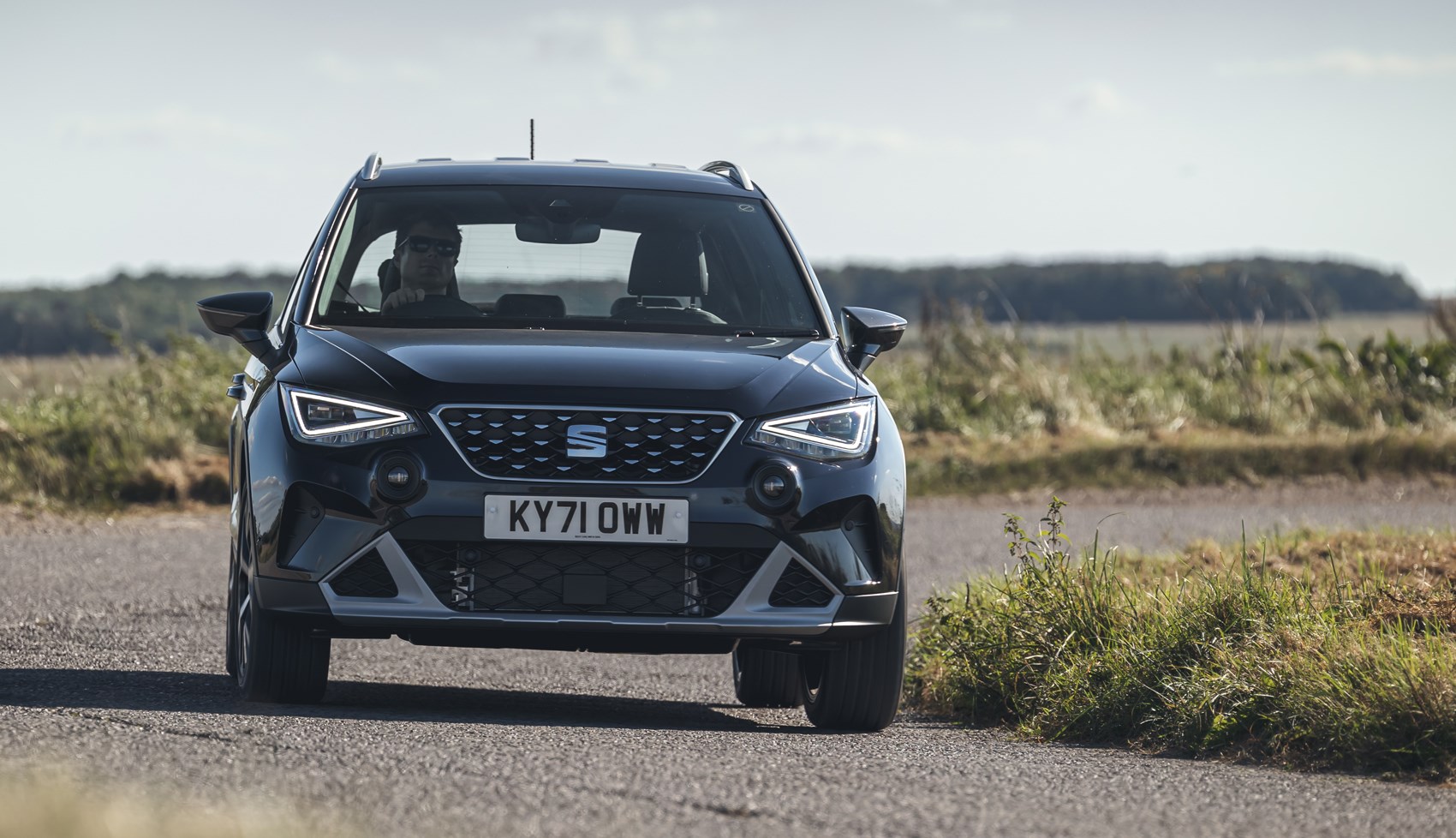
Aronas are generally quite firmly sprung, meaning little body roll and quite tight control in quick corners without being too bouncy or quick to unsettle. However, the larger-wheeled versions introduce the odd sharp jolt, and our test car’s Hankook rubber was noisy at speed.
Before you buy
Out of that huge range of trim and engine options, we’d suggest nothing higher than an FR – the base cars are already well equipped with all of the essential tech, and it’s best to go for smaller wheels to limit the fidgety ride. We prefer the manual, so we’d recommend that if you can freely use it.
There is plenty of competition around the Arona, with superminis also being a potential choice. The Ibiza, for example, is a more than fine enough car that does everything the Arona does but at a lower ride height. If you’re set on a crossover, the Ford Puma will be a more entertaining car to drive, but few can match the Arona for the best balance of space, performance and kit on board.
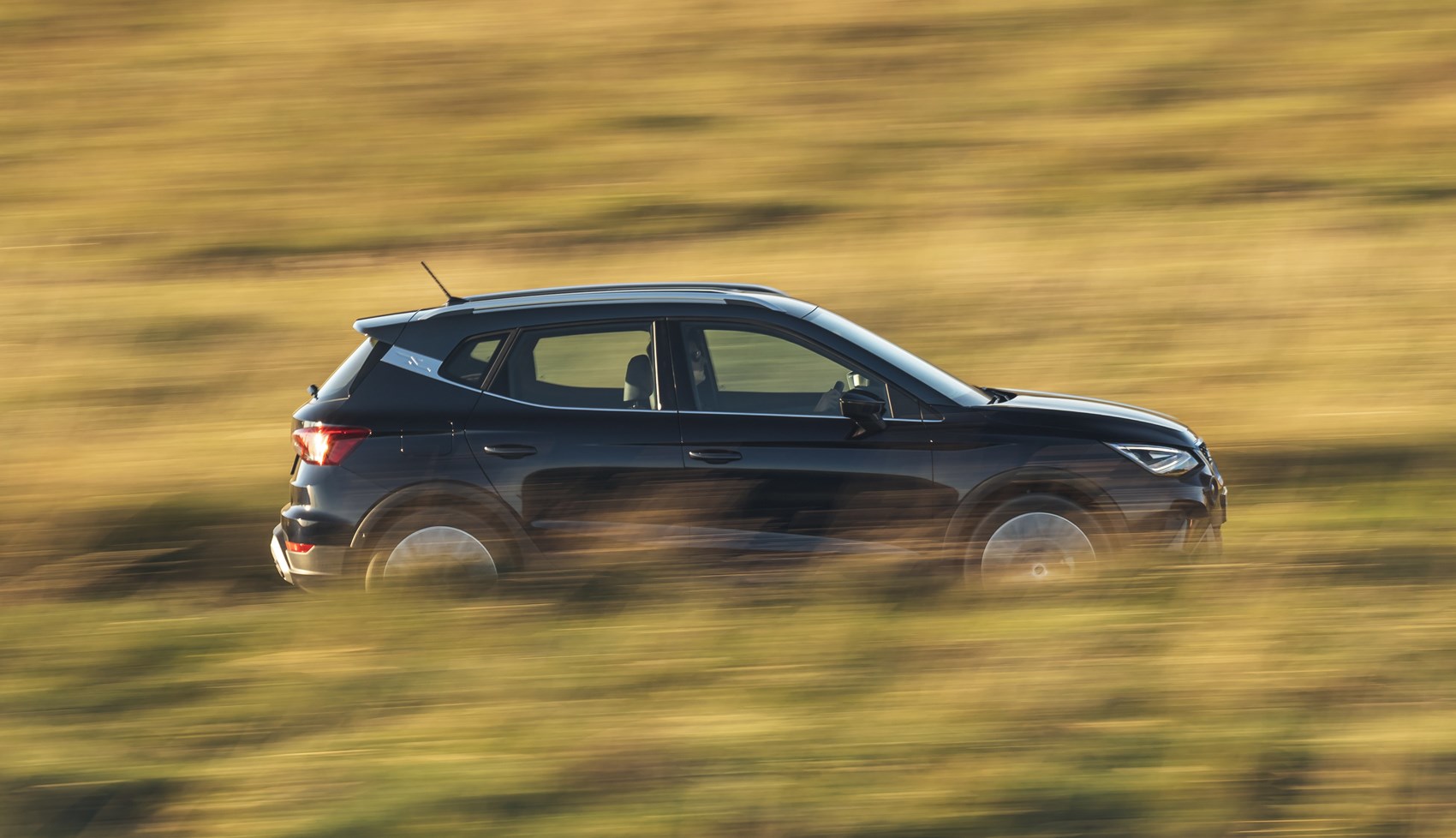
Verdict: Seat Arona
The Arona is neat, reserved, roomy enough, sweet enough to drive, simple enough to operate and big enough to be useful in many situations. In the immortal words of walking video game meme, Todd Howard: ‘it just works.’
Is it interesting? Not really. Is it fun? It’s not really that either. Are there niggles? There’s the odd one. But in a world of overcomplication, the Arona is one of the few remaining cars on sale that feel like an island of sufficiency and a refuge from excess. It shouldn’t be overlooked.
Specs are for a FR Limited Edition 1.0 TSI DSG